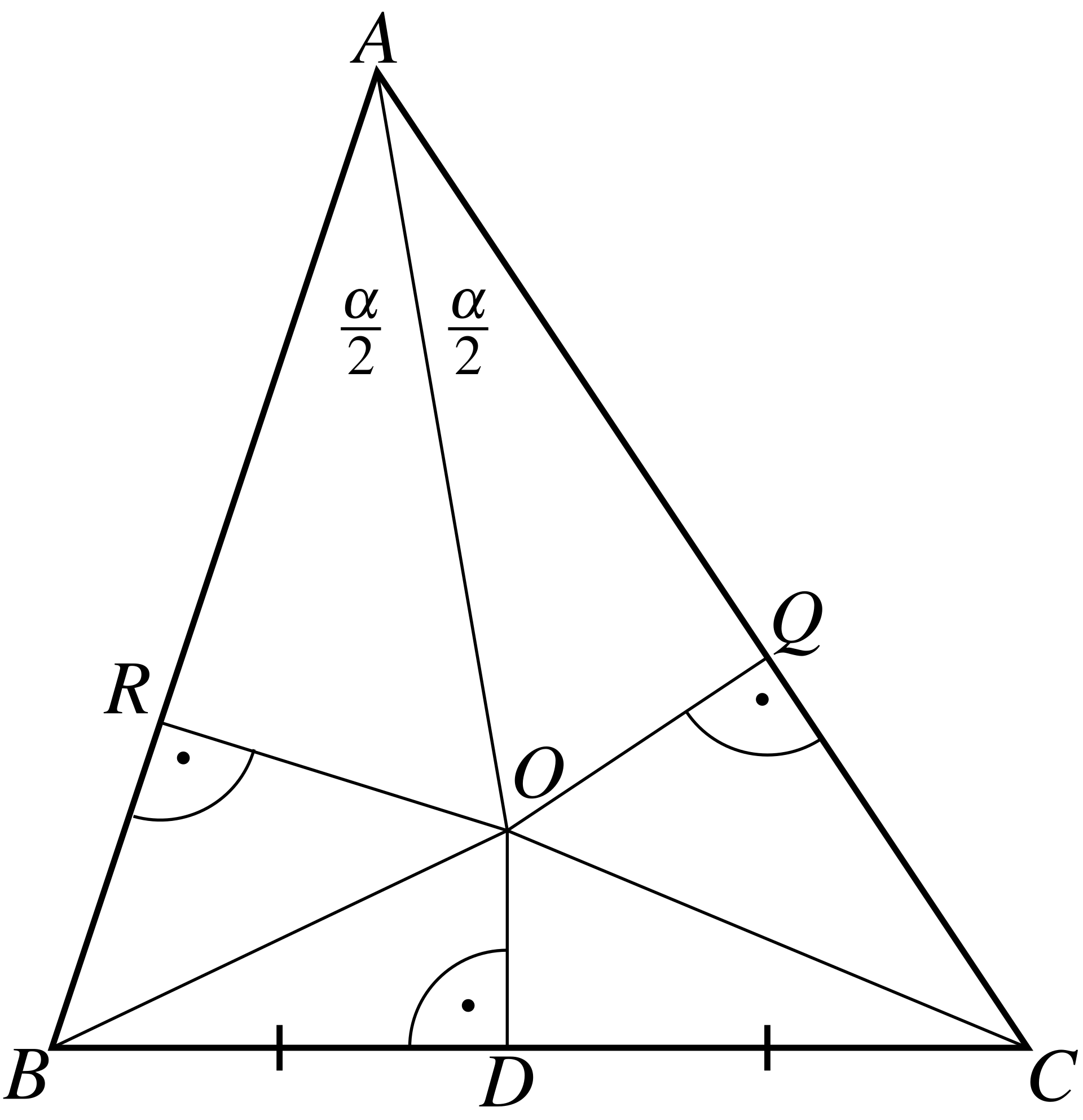Problems
Theorem: All people have the same eye color.
"Proof" by induction: This is clearly true for one person.
Now, assume we have a finite set of people, denote them as \(a_1,\, a_2,\, ...,\,a_n\), and the
inductive hypothesis is true for all smaller sets. Then if we leave
aside the person \(a_1\), everyone else
\(a_2,\, a_3,\,...,\,a_n\) has the same
color of eyes and if we leave aside \(a_n\), then all \(a_1,\, a_2,\,a_3,...,\,a_{n-1}\) also have
the same color of eyes. Thus any \(n\)
people have the same color of eyes.
Find a mistake in this "proof".
Let’s prove that \(1\) is the
largest natural number.
Let \(n\) be the largest natural
number. Then, \(n^2\), being a natural
number, is less than or equal to \(n\).
Therefore \(n^2-n=n(n-1)\leq 0\).
Hence, \(0\leq n\leq 1\). Therefore
\(n=1\).
Theorem: If we mark \(n\) points on
a circle and connect each point to every other point by a straight line,
the lines divide the interior of the circle is into is \(2n-1\) regions.
"Proof": First, let’s have a look at the smallest natural numbers.
When \(n=1\) there is one region (the whole disc).
When \(n=2\) there are two regions (two half-discs).
When \(n=3\) there are \(4\) regions (three lune-like regions and one triangle in the middle).
When \(n=4\) there are \(8\) regions, and if you’re still not convinced then try \(n=5\) and you’ll find \(16\) regions if you count carefully.
Our proof in general will be by induction on \(n\). Assuming the theorem is true for \(n\) points, consider a circle with \(n+1\) points on it. Connecting \(n\) of them together in pairs produces \(2n-1\) regions in the disc, and then connecting the remaining point to all the others will divide the previous regions into two parts, thereby giving us \(2\times (2n-1)=2n\) regions.
Let’s "prove" that the number \(1\) is a multiple of \(3\). We will use the symbol \(\equiv\) to denote "congruent modulo \(3\)". Thus, what we need to prove is that \(1\equiv 0\) modulo \(3\). Let’s see: \(1\equiv 4\) modulo \(3\) means that \(2^1\equiv 2^4\) modulo \(3\), thus \(2\equiv 16\) modulo \(3\), however \(16\) gives the remainder \(1\) after division by \(3\), thus we get \(2\equiv 1\) modulo \(3\), next \(2-1\equiv 1-1\) modulo \(3\), and thus \(1\equiv 0\) modulo \(3\). Which means that \(1\) is divisible by \(3\).
Recall that \((n+1)^2=n^2+2n+1\) and
after expansion we get \((n+1)^2-(2n+1)=n^2\). Subtract \(n(2n+1)\) from both sides \((n+1)^2-(2n+1)-n(2n+1)=n^2-n(2n+1)\) and
rewrite it as \((n+1)^2-(n+1)(2n+1)=n^2-n(2n+1)\).
Now we add \(\frac{(2n+1)^2}{4}\) to
both sides: \((n+1)^2-(n+1)(2n+1)+\frac{(2n+1)^2}{4}=n^2-n(2n+1)+\frac{(2n+1)^2}{4}\).
Factor both sides into square: \(((n+1)-\frac{2n+1}{2})^2=(n-\frac{2n+1}{2})^2\).
Now take the square root: \((n+1)-\frac{2n+1}{2}=n-\frac{2n+1}{2}\).
Add \(\frac{2n+1}{2}\) to both sides
and we get \(n+1=n\) which is
equivalent to \(1=0\).
Look at the following diagram, depicting how to get an extra cell by
reshaping triangle.

Can you find a mistake? Certainly the triangles have different area, so
we cannot obtain one from the other one by reshaping.
This problem is often called "The infinite chocolate bar". Depicted
below is a way to get one more piece of chocolate from the \(5\times 6\) chocolate bar. Do you see where
is it wrong?

Consider the following "proof" that any triangle is equilateral:
Given a triangle \(ABC\), we first
prove that \(AB = AC\). First let’s
draw the bisector of the angle \(\angle
A\). Now draw the perpendicular bisector of segment \(BC\), denote by \(D\) the middle of \(BC\) and by \(O\) the intersection of these lines. See
the diagram

Draw the lines \(OR\) perpendicular to
\(AB\) and \(OQ\) perpendicular to \(AC\). Draw lines \(OB\) and \(OC\). Then the triangles, \(RAO\) and \(QAO\) are equal, since we have equal angles
\(\angle ORA = \angle OQA = 90°,\) and
\(\angle RAO = \angle QAO,\) and the
common side \(AO\). On the other hand
the triangles \(ROB\) and \(QOC\) are also equal since the angles \(\angle BRO = \angle CQO = 90°\), the
hypotenuses \(BO = OC\) the legs \(RO = OQ\). Thus, \(AR = AQ,\) \(RB =
QC,\) and \(AB = AR + RB = AQ + QC =
AC.\) Q.E.D.
As a corollary, one can show that all the triangles are equilateral, by showing that \(AB = BC\) in the same way.
Let’s prove the following statement: every graph without isolated
vertices is connected.
Proof We use the induction on the number of vertices.
Clearly the statement is true for graphs with \(2\) vertices. Now, assume we have proven
the statement for graphs with up to \(n\) vertices.
Take a graph with \(n\) vertices by
induction hypothesis it must be connected. Let’s add a non-isolated
vertex to it. As this vertex is not isolated, it is connected to one of
the other \(n\) vertices. But then the
whole graph of \(n+1\) vertices is
connected!
Let’s prove that \(1=2\). Take a number \(a\) and suppose \(b=a\). After multiplying both sides we have \(a^2=ab\). Subtract \(b^2\) from both sides to get \(a^2-b^2=ab-b^2\). The left hand side is a difference of two squares so \((a-b)(a+b)=b(a-b)\). We can cancel out \(a-b\) and obtain that \(a+b=b\). But remember from the start that \(a=b\), so substituting \(a\) for \(b\) we see that \(2b=b\), dividing by \(b\) we see that \(2=1\).